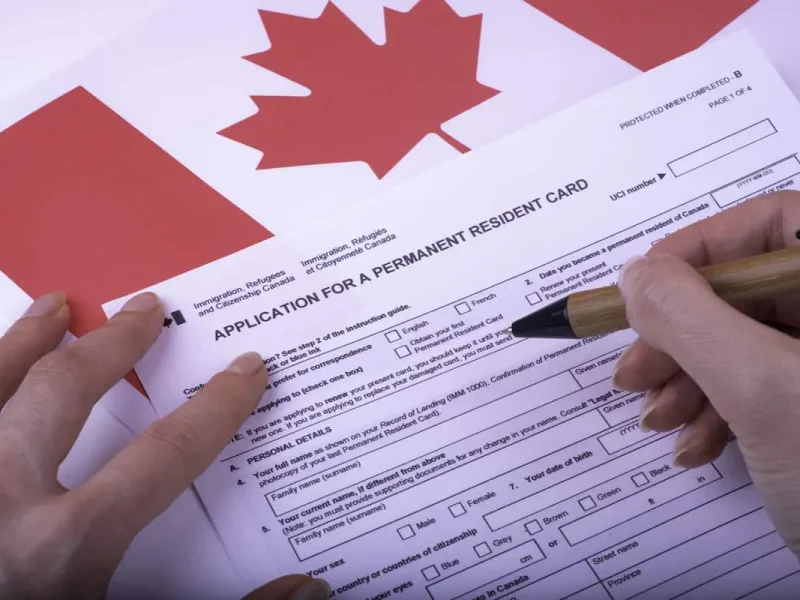What Is a PR (Maple Leaf) Card? What’s the Difference from the Landing Paper?
Landing paper (Confirmation of Permanent Residence):
A historical, permanent record that proves you landed as a PR.
PR Card:
A travel document with an expiry date (usually 5 years). You must show a valid PR card to re-enter Canada. If you can’t show a valid PR card when boarding a flight back to Canada, you can be denied boarding—even if you’re still a permanent resident in law.
Does My PR Status Expire If My Card Expires?
No!
Your status as a permanent resident does not expire just because your card does.
If your PR card expires, you can stay in Canada—you just can’t travel internationally (unless you apply for a special document to come back). If you’re not planning to leave Canada, there’s no rush to renew.
But:
If your PR card expires and you are outside Canada, you must apply at a Canadian visa office for a Permanent Resident Travel Document. You’ll need to prove you met the residency obligation (see below).
What Are the Residency Requirements?
You must be in Canada for at least 730 days in every rolling 5-year period (about 2 years out of 5).
- Time is counted backward from the date you sign your PR card application, or from the date you’re examined at the border.
- Partial days count: If you leave and return the same day (like a quick trip to the US), that day doesn’t count as an absence.
Example:
- Leave Canada on July 1, return July 20. Only 18 days count as absent (both travel days don’t count as absences if you spent even a minute in Canada).
Exceptions: When Time Abroad Still Counts as “Residency”
- Accompanying a Canadian citizen spouse (or, for minors, a Canadian parent):
Time spent outside Canada with your Canadian spouse (or child with a parent) counts as days in Canada. - Working full-time for a Canadian business:
If you’re sent abroad to work by a real, operating Canadian company (not a shell company), time working overseas counts as days in Canada. Your spouse and kids abroad with you also qualify.
When Does Immigration Canada Check If I Met the Residency Requirement?
- When you apply to renew your PR card
- When you return to Canada and a border officer suspects you’ve been away too long
- When you apply for a Permanent Resident Travel Document abroad
Calculation always goes back 5 years from your application or border entry.
What If My PR Card Is Expiring, But I Don’t Meet the Residency Requirement?
Scenario:
You lived mostly in China/US, your PR card is expiring, and you want to return to Canada.
- If you try to re-enter and can’t prove 730 days of residency, the border officer may:
- Hold your passport and call you back for a review
- Issue an A44(1) report and removal order—you must leave Canada, but can appeal within 30 days (if you don’t appeal or lose, you lose PR status and are barred from re-entry for life)
- Ask you to sign a “Voluntary Renunciation”—you give up your PR status and enter as a visitor (don’t sign without talking to a lawyer!)
- Consider “Humanitarian & Compassionate” grounds—if you have Canadian family or compelling reasons, you may be allowed in, but you must not leave for two years
Can I Enter Canada with an Expired PR Card from the US?
By land/private car:
If you drive across the border, you may be allowed entry as a PR, even with an expired card. Airlines, however, won’t let you board a flight to Canada without a valid card or travel document.
How Does the Five-Year Period Work for PR Card Renewal?
Every time you apply to renew, the “5 years” rolls forward from the day you sign your new application. It’s not fixed to your original landing date. You must show 730 days in Canada in the immediately previous five years.
What Documents Do I Need to Prove My Time in Canada?
- Entry/exit records (travel history)
- Passport stamps
- Boarding passes, flight records
- CRA tax returns, utility bills, rental agreements, pay stubs
For overseas work:
- Letter from the Canadian employer
- Company registration and tax records
- Employment contract, pay records
- Proof the company is real and you’re working full-time
Losing Your PR Status: How Can It Happen?
- Failure to meet the residency requirement and not winning an appeal
- Criminal convictions (serious offences can trigger a removal order)
- Voluntarily giving up PR status (by signing a renunciation at the border or consulate)
Difference Between PR and Canadian Citizen
- PRs can’t vote or run for office.
- PR status can be lost (for not meeting obligations or serious criminality).
- Citizenship is permanent (unless obtained by fraud).
Pro Tips
- Don’t wait until the last minute: Renew your PR card 6 months before expiry if you plan to travel.
- Track your days: Keep records of your travel in and out of Canada.
- Get legal help: If you’re unsure about your residency days, or facing an A44 report or removal order, consult an immigration lawyer ASAP.
- Don’t sign away your PR at the border unless you fully understand the consequences.
Contact George Lee Law for Immigration Help
If you’re facing issues with your PR card, residency days, or border trouble, our team can help with:
- PR card renewals and residency appeals
- Permanent Resident Travel Document applications
- A44 report and removal order responses
- Humanitarian & Compassionate applications
- Citizenship advice
Languages: English, Mandarin Chinese, Cantonese
Phone: 604-681-1611
Email: info@gleelaw.com
Website: gleelaw.com
This article is for general information only. For advice on your PR card, residency, or immigration status, consult a qualified Canadian immigration lawyer.

